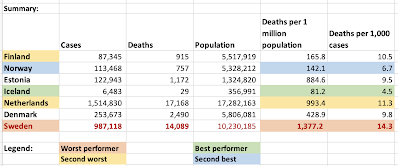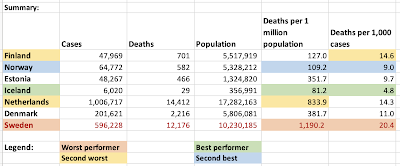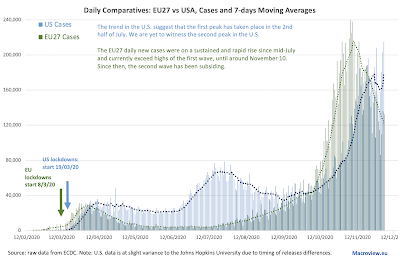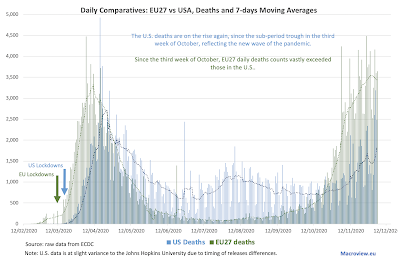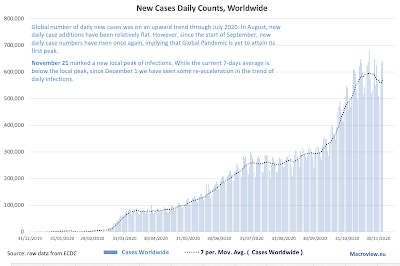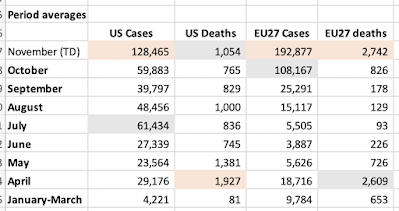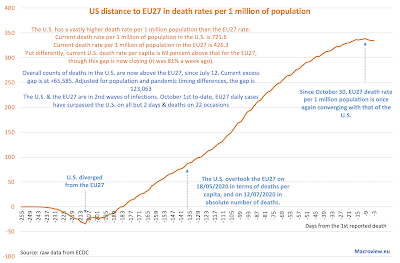As before, let's conclude the latest update of the Covid19 trends data with analysis covering comparatives between Sweden and other Nordics.
Sweden is commonly used as a shining example of 'saving the economy' by not 'panicking' into severe mobility restrictions. This argument is commonly used by the folks who tend to believe in sinister Big State conspiracies around other countries' responses to the pandemic.
Sweden started the pandemic by openly pursuing the strategy targeting 'herd immunity'. In this, the country approach to the pandemic containment was similar to that of the Netherlands. However, unlike Sweden, the Netherlands quickly reversed this approach and switched to the more common policy response of imposing severe mobility restrictions.
When it comes to the Nordic countries, there has been both some significant heterogeneity in Covid19 policies responses and some shared experiences. To reflect some of these, I look at three Nordics groupings to compare these with Sweden:
- Nordic 1 group comprising Sweden's immediate neighbors of Norway and Finland. This is the 'closest' group to Sweden as the three countries share relatively open borders and, in normal times, have no mobility restrictions between them. All three countries are physically remote from the rest of Europe, with far less mobility across borders to third countries than, say, Belgium or the Netherlands.
- Nordic 2 group adds Iceland and Estonia to the first group. Iceland is, obviously, an island nation that is also relatively well isolated in physical terms, making its border controls more effective. Estonia is a country that is not physically isolated, but shares less physical land-based borders with the rest of the EU (ex-Finland). Both, N1 and N2 groups are, therefore, characterized as those countries which can impose more effective control of their borders for the purpose of isolating during the pandemic.
- Nordic 3 group adds two key countries that have much less capacity to isolate from the Continental EU states: Denmark and the Netherlands.
So, here are the updated charts, in which I adjust all three groups to normalize cases and deaths numbers to Sweden's population scale:
As of the end of 2020, cumulative excess deaths in Sweden compared to other Nordics, adjusting for differences in population sizes are:
- 7,545 more deaths in Sweden than in Nordics 1 group of Finland and Norway;
- 7,359 more deaths in Sweden than in Nordics 2 group of Finland, Norway, Estonia and Iceland; and
- 3,808 more deaths in Sweden than in Nordics 3 group of Finland, Norway, Estonia, Iceland, Denmark and the Netherlands.
Put differently, between 3,800 and 7,545 more deaths took place in Sweden than in its relatively comparable European neighbors, primarily because Swedish Government prioritized economic well-being over public health.


